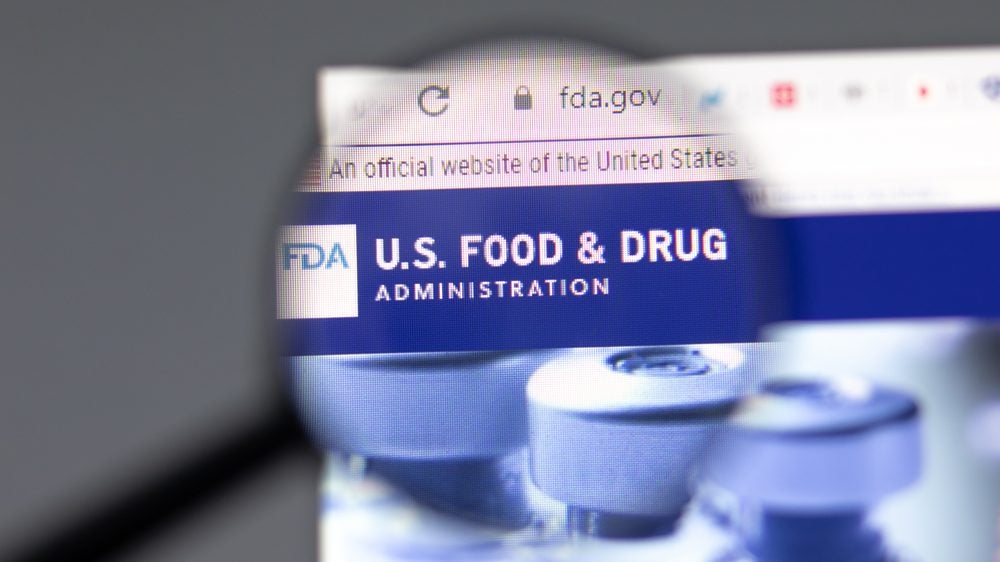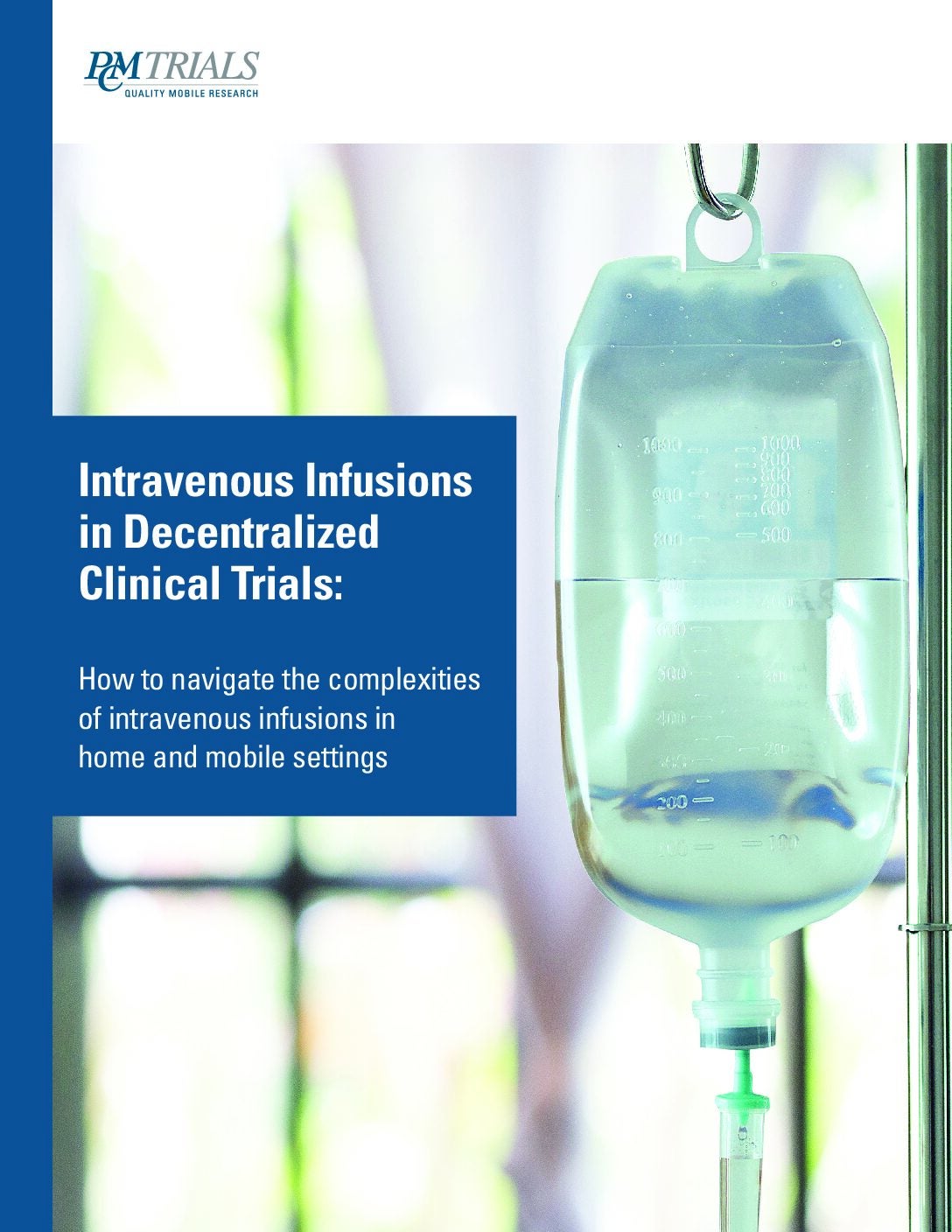
Only one month is left until the US Food and Drug Administration (FDA) closes its public comment inbox for the recently released and long-awaited draft guidance on decentralised clinical trials (DCTs).
The FDA teased the concept of DCT guidance for a few years. However, it only became an actionable promise this year after it was indicated in the Fiscal Year 2023 Omnibus Spending Bill, which was signed into law by President Joe Biden late last year.

US Tariffs are shifting - will you react or anticipate?
Don’t let policy changes catch you off guard. Stay proactive with real-time data and expert analysis.
By GlobalData
“It was a long time coming,” says Darcy Forman, chief delivery officer at Science 37. She adds that since the launch of European Medicines Agency’s (EMA) recommendations paper on DCTs last year, the industry has been waiting with bated breath to see what the FDA plans to release.
Decentralised research tools are not a new concept. They became one of the few options to save ongoing trials during the Covid-19 pandemic, as global lockdowns restricted in-person clinical trial activity.
The FDA released the guidance on trial conduct during the pandemic, but it was more of an emergency communication that did not define the landscape for the long term, says Dr Mark Goldberg, CEO at Allucent.
The industry felt relief once the DCT draft guidance was released in May. “It does provide a level of assurance that the FDA is supporting and accepting decentralisation as a way of doing some of the trials,” declares Norma Rodriguez, vice president and global head of quality assurance and compliance at Saama Technologies.
Even though the draft guidance was embraced and has reduced regulatory uncertainties, it might have only scratched the surface. Dr Pamela Tenaerts, chief scientific officer at Medable, says that while certain points are well explained in the draft, some things lacked clarity and explanation.
Clinical Trials Arena spoke with DCT experts on their thoughts about the DCT draft guidance, whether it hit the spot or lacked actionable recommendations.
PI oversight and HCPs
One of the topics that might become a challenge for sponsors in DCTs is the use of local healthcare providers (HCPs), says Nathaniel Greer, vice president of compliance at Datacubed Health.
In the draft guidance, the FDA outlines that depending on the protocol, certain visits and trial-related activities may be conducted by HCPs located close to the trial participant’s home. However, HCPs are not considered trial personnel, are not required to have detailed knowledge of the protocol or the investigational product, and should only complete tasks within their clinical practice.
However, this poses a question about the oversight of a principal investigator (PI). Generally, PIs are responsible for data collection, but the use of different vendors might disperse that control, says Greer. Goldberg questions how a PI can take responsibility for personnel they did not interview, hire, or have an opportunity to evaluate their credentials.
On 20 June, during a Q&A session at the FDA’s DCT draft guidance webinar, Dr Ryan Robinson, medical officer of clinical methodology in the office of medical policy at the FDA, said that since the local HCPs are already licensed and regulated to provide routine clinical activities, “hopefully their expertise could, in general, be relied upon to support clinical trial conduct and based upon this, the amount of oversight needed may be limited in a way.”
Goldberg says that the FDA is most likely to receive the majority of the feedback on the PI oversight and use of HCPs. Indeed, the agency has already received several comments on this issue on its website and during the webinar.
Scalability of data collection
From the perspective of a technology provider that offers data collection services, Rodriguez says that the draft guidance is a good opportunity to grow in DCTs and on the technical side. However, she acknowledges that the additional data collection points included in the draft guidance might be a challenge for people completing these tasks.
For example, Forman explains that Science 37 often conducts virtual clinical trials with thousands of enrolled patients. She notes that while it might be challenging to collect home addresses due to privacy, it also poses scalability and operationalisability hurdles to gather such a vast amount of information. While she understands why the FDA would want this data to be captured, Forman says that there was vague wording within the draft guidance that would need more clarity.
With the FDA requesting a well-documented data collection, there might be a few challenges from a technology standpoint, explains Goldberg. “A lot of the systems that are used in the industry weren’t necessarily designed to capture that specific information,” he notes, adding that it could be seen as a fine print of the draft guidance.
DCT Tower of Babel
The lack of mutual understanding in the DCT community is an ongoing issue. Organisations such as the Decentralized Trials & Research Alliance (DTRA) launched a glossary last year with an aim to develop a common lexicon.
FDA provided a DCT definition in the opening paragraph of the draft guidance, which is in line with other regulatory documents from EMA or the International Council for Harmonisation (ICH). However, Tenaerts says that over the past few weeks, people in the industry have started questioning whether decentralisation is the right term to describe trials that use digital technology.
For example, one public submission comment noted that the draft guidance title, which includes the words “decentralised clinical trials”, “is bifurcating clinical trials into two distinct separate categories”: trials that are and are not decentralised. The commentator suggested more inclusive titles that would switch “decentralised trials” to “decentralised elements of clinical trials”.
Tenaerts explains that while there is uniformity on the regulators’ side, there might not be a unified term used by the industry and patients. “Mixed terminology is here to stay, and, sadly, I don’t think that a guidance changes that completely,” she adds.
The guidance was probably not meant to solve the jargon problem, and it is ultimately up to the industry to find a common language, Greer agrees.
Other technology-related missed points
Usually, the FDA’s guidance documents include one or two of its centres. However, the DCT draft guidance represents all three centres: the Center for Drug Evaluation and Research (CDER), the Center for Biologics Evaluation and Research (CBER), and the Center for Devices and Radiological Health (CDRH).
A lot of the DCT dialogue is around drug development, but decentralisation is equally applicable to device development, Goldberg says. Indeed, even the DCT draft guidance mostly focuses on drug trials rather than trials investigating medical devices.
Rodriguez notes that it would have been nice to see DCTs and artificial intelligence (AI) come together in this guidance, especially since the FDA has spent a lot of time on AI and recently released a draft guidance on AI/ML-enabled medical devices. “If they would have just brought in a little bit more of that technology and ability to use AI, it would have covered the future [of DCTs] as well,” she adds.
Shaping the future of DCTs
As this is just a drafted version of the final guidance, it is not surprising that the FDA might have missed some points to clarify. “Draft is draft for a reason and they’re looking for feedback and comments on everything,” Forman says.
Tenaerts says that the FDA reads every comment and takes it very seriously. Interestingly, she says that a lot of people submit their comments right at the very end of the submission period. Indeed, there were only 11 publicly submitted comments at the time of reporting.
While no one has a crystal ball and cannot predict when the final guidance will come out, Tenaerts says that it will take the FDA a couple of months to pull it all together, and it could take a year to a few years to see the final version. Yet, she says the FDA cannot afford to take longer as this is a field of interest.
With the industry demanding more clarification, Tenaerts agrees that people will always want more clarity or to-do checklists, but the FDA is generally a more principle-based organisation.
Even though DCTs are not a new concept, the draft guidance will solidify decentralisation. “I’m hoping that we stop thinking about DCTs and operationalising trials in a different way as innovative and it starts becoming the DNA of clinical trial execution,” Forman says.
Indeed, if the FDA did not view that there was a benefit to the quality of the drug development process, especially through diversity and more data collected in real-world settings, they would not have published a draft guidance, Goldberg notes. It will also help sponsors run better clinical trials. “There isn’t anything revolutionary, it’s evolutionary,” he says.
Decentralised Clinical Trial coverage in Clinical Trials Arena is supported by Huma.
Editorial content is independently produced and follows the highest standards of journalistic integrity. Topic sponsors are not involved in the creation of editorial content.




